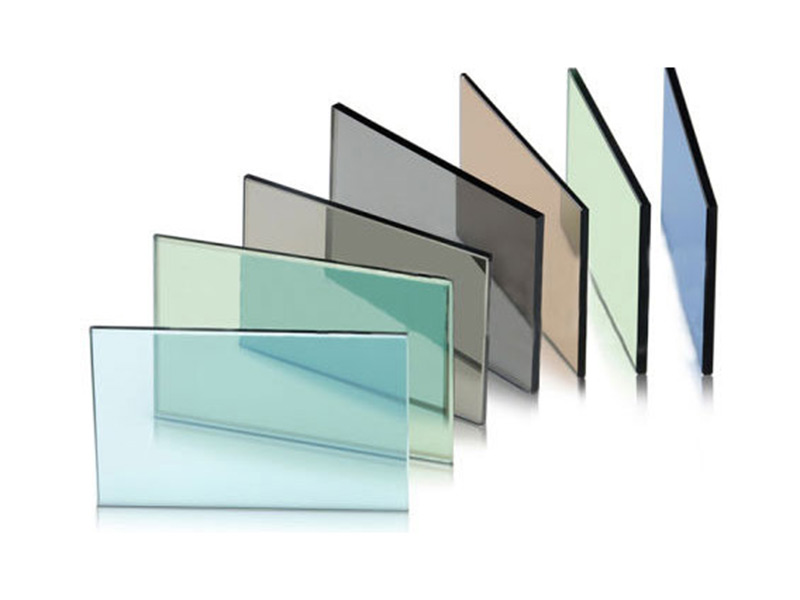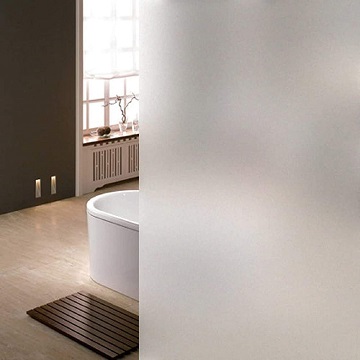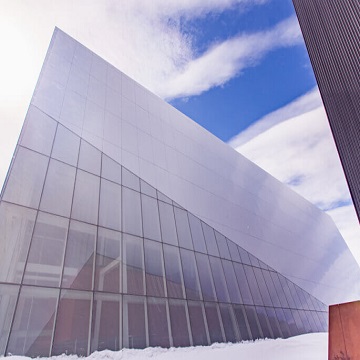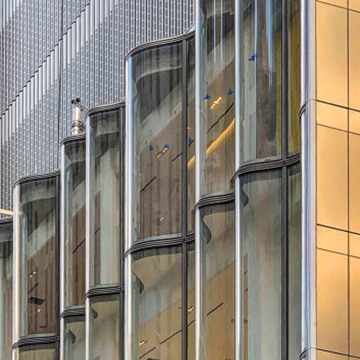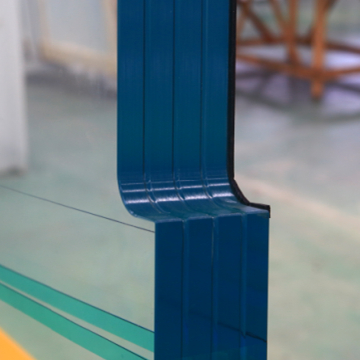What is Low-E Glass & Does it Make Windows Energy Efficient?
When it comes to windows, the type of glass you choose is a critical consideration. Experts estimate that 70 percent of energy loss occurs in windows and doors, and that 90 percent of window heat loss occurs through the glass. Energy efficiency is important, but the lingo can be very confusing when researching different types of energy-efficient glass. In this post, we’ll explain what a Low-E window is, why it’s energy efficient, the different types of Low-E coatings and which is best for the area you live in.
What is a Low-E Window and What Makes it Energy Efficient?
Low-E, or low-emissivity, glass was created to minimize the amount of infrared and ultraviolet light that comes through your glass, without minimizing the amount of light that enters your home. Low-E glass windows have a microscopically thin coating that is transparent and reflects heat. The coating is even thinner than human hair! The Low-E coatings keep the temperature in your home consistent by reflecting the interior temperatures back inside.
According to the Vitro (formerly PPG) Glass Education Center, there are several factors used to measure the effectiveness of glass with Low-E coatings:
-- Solar Heat Gain Coefficient (SHGC): This is the fraction of incident solar radiation that is admitted through the window. This can be either directly transmitted and absorbed or radiated inward.
-- U-Value: This is the rating that is given to a window based on how much heat loss it allows.
-- Visible Light Transmittance (VLT): The measure of how much visible light passes through the glass.
-- Light to Solar Gain: The ratio between the window’s visible light transmittance and its Solar Gain Coefficient rating.
Types of Low-E Coatings
1. Passive Low-E Coatings (Hard-Coat): The passive Low-E coatings are manufactured using the pyrolytic process, which creates a pyrolytic coating. The coating is then applied to the glass ribbon while it is being produced on the float line, which causes the coating to “fuse” to the hot glass surface. This fusion creates a strong bond, or “hard-coat,” that is very durable.
2. Solar Control Low-E Coatings (Soft-Coat): Solar control Low-E coatings are manufactured using the Magnetron Sputtering Vapor Deposition (MSVD) process, which means the coating is applied off-line to pre-cut glass in a vacuum chamber at room temperature. This coating, which is also referred to as “soft-coat,” needs to be sealed in an insulated glass (IG) or laminated unit. The soft-coat has lower emissivity and superior solar control performance. This coating offers the highest performing solar control.
What's the benefit of Low E glass?
Energy Saving & Cost Saving
Low emissivity glass has a directional blocking of heat penetration, keeping the heat on the original side. In the cold zone, it can reduce heat loss indoor and maintain the indoor temperature. In tropical or subtropical regions, it can reduce the heat transmitted by outdoor sunlight to reduce air conditioning load.
Low E glass application in the different climate areas
High latitude and cold climate
These areas have long winters, shallow winter temperatures, short daylight hours, and weak light intensity.
Firstly, the high-transmittance low emissivity glass can make maximum use of natural light due to its excellent light transmittance. Secondly, the indoor temperature is higher than outdoors, and the far-infrared heat radiation mainly comes from indoors. Therefore, the low emissivity glass can reflect it indoors to keep the indoor heat from leaking out.
Hot summer and warm winter area
These areas heat up quickly in summer, and the demand for heating in winter is lower than that of high-latitude regions. In addition, Double-silver or triple-silver low emissivity glass can prevent outside heat from entering the room, reducing the energy consumption for air conditioning and cooling.
Specification of Low-e glass
Type: Low E Glass
Thickness: 4mm; 5mm; 6mm; 8mm; 10mm; 12mm; 15mm; 19mm (Customizable)
• Size: As per request, raw glass size max 12000mm*3300mm
• Color: Coated Low E Color
Optional Processing: Cutting to size, Drilling holes, Edging, Tempering, Laminating, etc.
Manufacturing Standard: CE, BS, SGCC, SAI, CCC
Which Type of Low-E Coating Glass is Best for My Climate?
Are you unsure which type of Low-E glass is best for you? Before you decide, it is important to consider your area’s climate:
· If you live in an extremely cold climate, the hard-coat Low-E glass may be an option for you, because it allows some of the sun’s short-wave infrared energy to pass through the glass. This helps to heat your home in the winter and allows the glass to reflect the interior long-wave heat energy back inside.
· However, if you live in a cold to hot climate, which covers nearly all of the United States, the soft-coat Low-E glass is best, since it offers better UV protection and has a better overall U-value. The soft-coat Low-E coating also reflects the warm and cool air back into your room instead of allowing it to leak outside.
When you’re trying to decide which window style, size and design is best for your home, it’s also very important to consider which type of glass would work best. Low-E coatings play a pivotal role in the performance of your windows, can save you money on energy costs and can drastically reduce fading to furniture and décor by blocking UV rays. Wallkingdon glass are made with a variety of high performance, energy-efficient glass options that can meet your energy performance and budgetary needs.
How much does Low-e glass cost?
Price mainly consists of two parts, transportation and raw materials, we quote according to your specific volume and product requirements of the specifications, there are related project information consulting can also contact us via enquiry@wallkingdonglass.com
Who can supply Low-e glass?
Wallkingdon Glass is a leading glass supplier in China for architectural and interior glass.
We have Low-e glass certification who is capable to produce the glass for safety, security, visual and functional applications.
If you have any question for Low-e glass , pls kindly contact us via enquiry@wallkingdonglass.com


